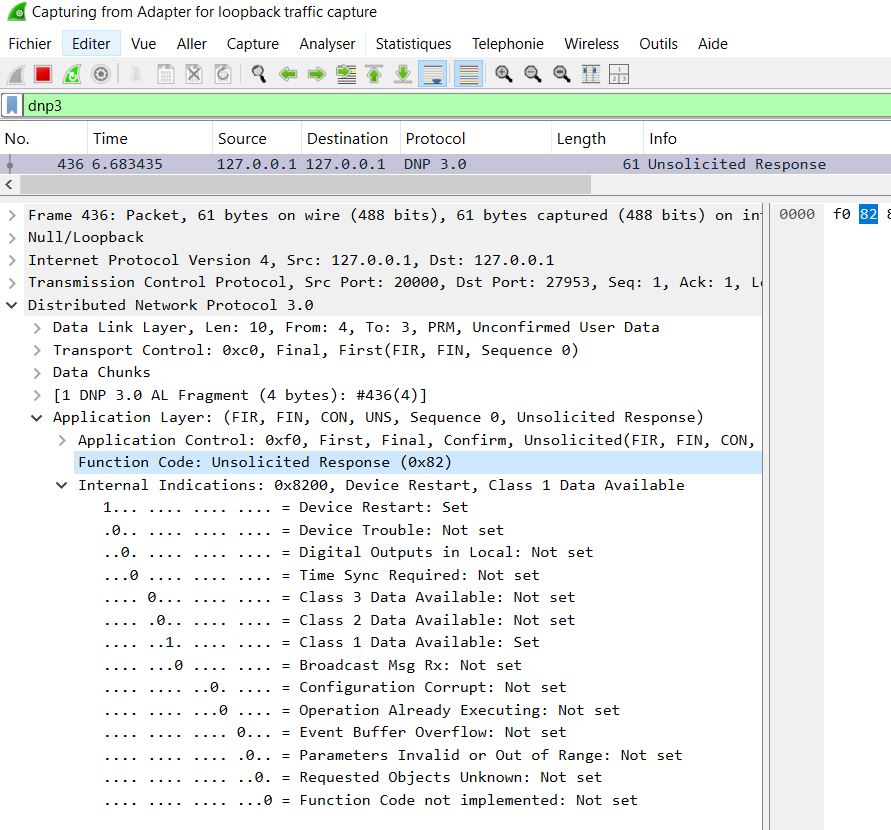The Distributed Network Protocol (DNP3) is recognised for its efficiency and reliability in SCADA and power automation systems.
The DNP3 protocol is characterized by three key operational concepts: Report by Exception, Periodic Background Polls, and Balanced Communication. These concepts enable the system to optimize bandwidth utilization while ensuring real-time monitoring of field device status.
Table of Contents
Report by Exception (unsolicited response)
The conventional SCADA protocols are based on polling, where a master station continuously queries outstations for updates. This method ensures up-to-date information but can lead to inefficient use of communication bandwidth, especially when data changes infrequently.
The DNP3 protocol enhances this process through a feature known as “report by exception,” also referred to as “unsolicited response.”
In this mode, outstations remain silent until an important change occurs — such as an alarm being triggered, a breaker being operated, or sensor variation being detected.
When this happens, the outstation automatically sends an unsolicited response to the master station, reporting only the changed data.
Because the system transmits messages only when events occur, the communication channels remain mostly idle, or “quiescent.”
This significantly reduces network traffic, minimizes latency during critical events, and enables more efficient use of available bandwidth — a major advantage for radio, satellite, and narrowband networks.
In a report-by-exception mode, the absence of messages does not indicate a failure; it simply means that nothing has changed.
Periodic Background Polls
Even in a report-by-exception mode, DNP3 masters typically perform periodic background polls, often every few minutes or hours to ensure that communication links remain operational.
These polls act as a safety check: if an outstation becomes unreachable due to a line failure or device malfunction, the master can detect the loss of communication.
Without background polling, a silent link might be mistaken for a stable system when, in fact, a failure has occurred.
Periodic polls help verify link integrity, synchronize clocks when necessary, and confirm that the network remains operational between event reports.
This hybrid approach — combining event-driven reporting with scheduled verification, is one of the reasons why DNP3 protocol provides such exceptional reliability, even over unstable or low-bandwidth communication channels.
Balanced Communication and Message Initiation
DNP3 supports balanced communication — a flexible mechanism that allows either side of a connection to initiate data exchange.
In a balanced system, any station can act simultaneously as a primary (sending) and secondary (responding) device.
This capability enables peer-to-peer communication and unsolicited messaging, allowing outstations to send updates without waiting for master polls.
However, despite this flexibility, only master stations can initiate formal data requests or control commands.
Outstations may initiate communication for event reporting, but they do not issue commands to other devices.
In practice, DNP3 maintains a clear logical distinction between master and outstation, even within a balanced framework.
This design preserves the control hierarchy while enabling greater responsiveness, efficiency, and communication flexibility across the network.
Example: Unsolicited Response in Report-by-Exception Mode
The following Wireshark capture shows a DNP3 unsolicited response — a message sent automatically by an outstation when an event occurs, without waiting for a master poll.
In this example:
- The Function Code (0x82) identifies the frame as an Unsolicited Response.
- The Internal Indications field (0x8200) shows that a Device Restart has occurred and Class 1 Data is available.
- No polling command was issued by the master, confirming report-by-exception operation.
This demonstrates how DNP3 efficiently uses bandwidth — the system remains quiet until a significant change triggers an unsolicited message from the outstation.

Summary
- Report by Exception enables outstations to send unsolicited messages only when data changes, keeping the system quiet and efficient under stable conditions.
- Periodic Background Polls maintain communication integrity by detecting link failures, verifying connectivity, and ensuring no updates are missed.
- Balanced Communication allows both masters and outstations to initiate transmissions, providing flexible, peer-aware interaction while preserving clear master control.
Together, these mechanisms make DNP3 protocol one of the most efficient, reliable, and adaptive communication protocols used in modern SCADA and power automation networks.

Great explanation of DNP3’s Report by Exception and balanced communication. Clear, concise, and insightful! I especially liked how you clarified background polling’s role in maintaining link integrity. Excellent technical write-up!